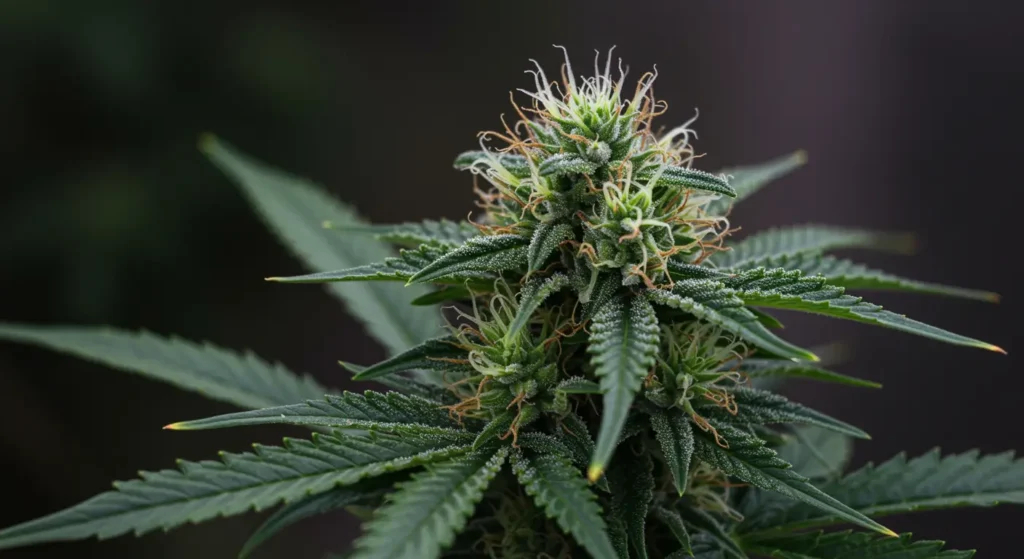A cannabis plant grows on a tall central stem with branches forming at nodes along the stalk. Large fan leaves spread outward, while flowers develop into dense clusters covered in resin. These features create the plant’s iconic look, making it easy to recognize whether it’s early in growth or nearing harvest.
Life Cycle of a Marijuana Plant
Germination (3-10 Days)
During germination, the seed absorbs moisture, cracks open, and develops a white taproot. This taproot anchors the plant once it’s placed in soil. The first tiny shoot emerges shortly after, marking the beginning of active growth and the transition toward the seedling stage.
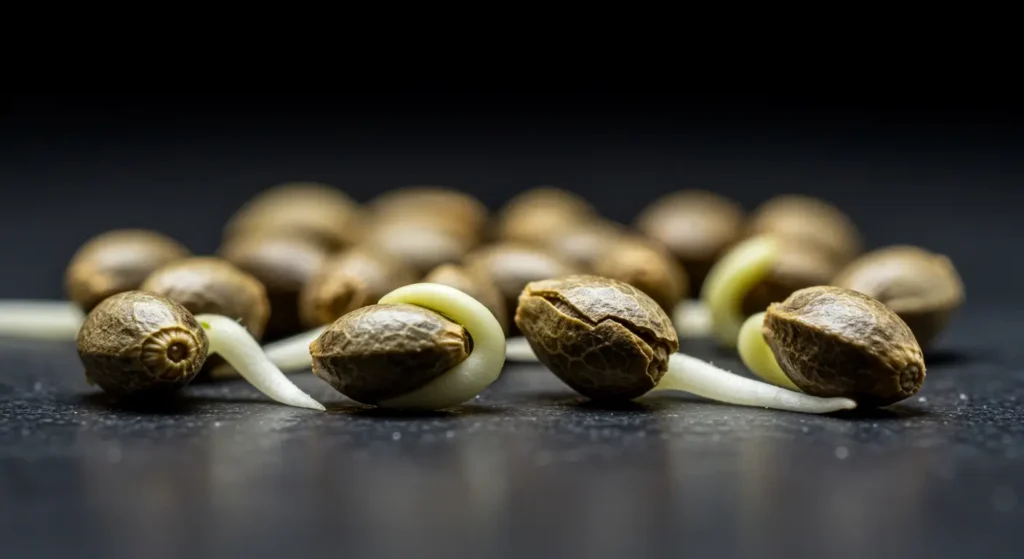
Seedling Stage (2-3 Weeks)
The seedling produces its first pair of cotyledon leaves, which feed the young plant while the first serrated leaves form. Seedlings are small and delicate, requiring stable conditions. Healthy seedlings establish the foundation for strong vegetative growth and proper plant structure later on.
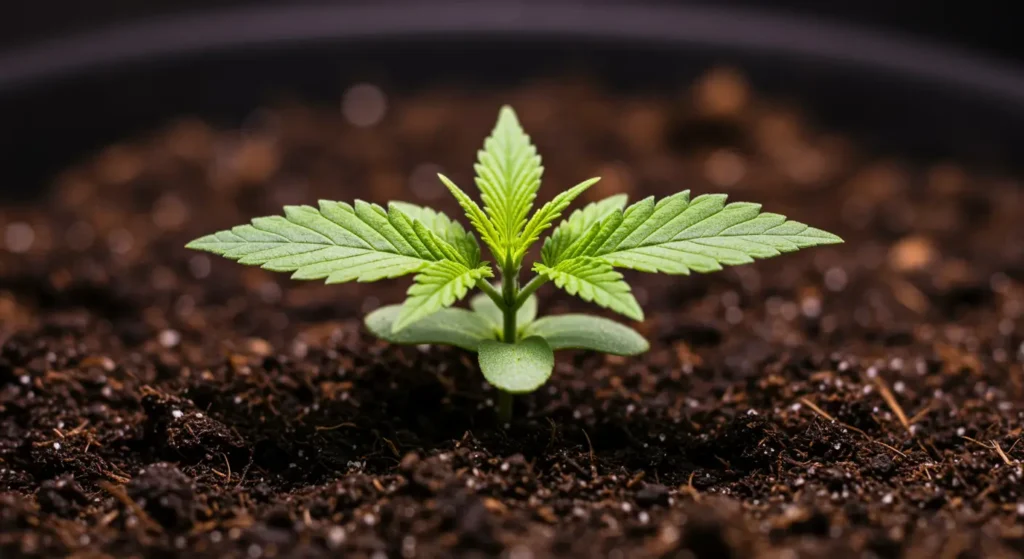
Vegetative Stage (3-16 Weeks)
In the vegetative stage, the plant focuses on building size and structure. The stem thickens, branches spread out, and large fan leaves develop to support photosynthesis. This phase determines the plant’s final shape and directly impacts how many bud sites will form during flowering.

Flowering Stage (8-11 Weeks)
When exposed to longer periods of darkness, cannabis shifts into flowering. Buds begin forming along branches, producing resin-rich trichomes and orange pistils. The plant focuses its energy on flower development until harvest. The size, aroma, and density of the buds vary by strain and growing conditions.

Parts of the Cannabis Plant
Seeds
Cannabis seeds contain the combined genetic material of a male and female plant. Under the right moisture and temperature conditions, the seed opens and releases a taproot. Once planted, this taproot establishes the beginnings of the full root system that will support the plant throughout its life.

Cotyledon Leaves
Cotyledons are the first leaves seen after germination. Small, smooth, and oval-shaped, they help jump-start photosynthesis while the first serrated leaves form. Their healthy appearance indicates successful germination and gives growers an early sign that the young plant is off to a good start.
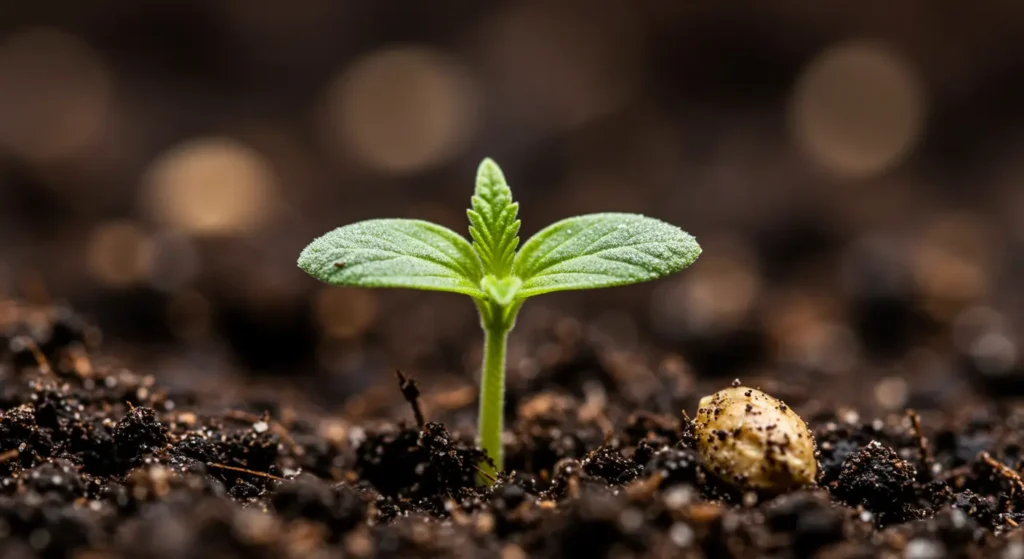
Roots
Roots grow downward from the taproot and spread through the soil as the plant matures. They absorb water, nutrients, and oxygen while anchoring the plant securely. A strong, healthy root system is essential for vigorous growth and can be enhanced with organic soil additives like mycorrhizae.
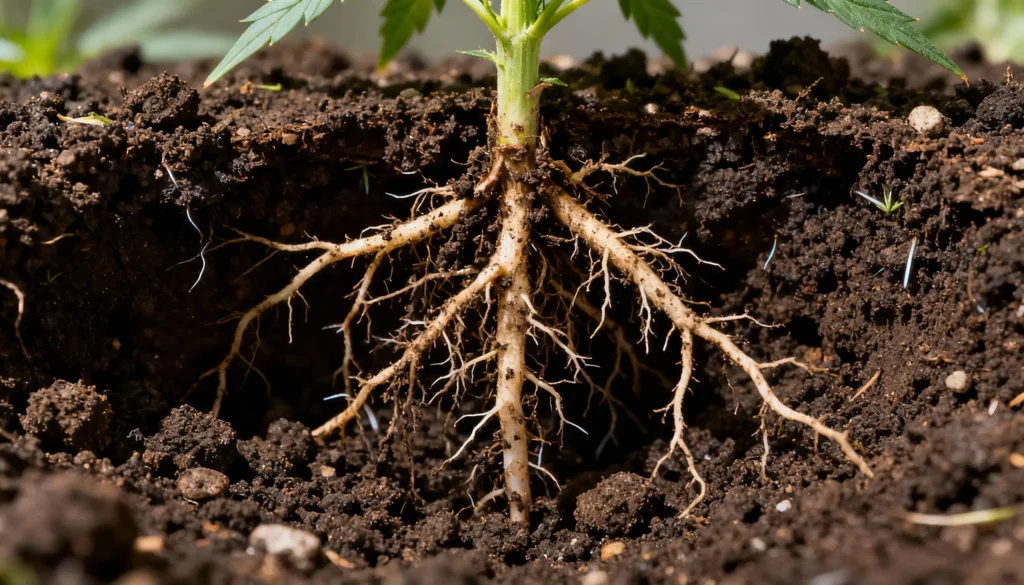
Stem
The main stem grows vertically and supports all branches and bud sites. As the plant matures, the stem thickens and becomes more rigid. Growers may top the stem to encourage lateral growth, helping the plant produce more flowering sites and creating a wider canopy.
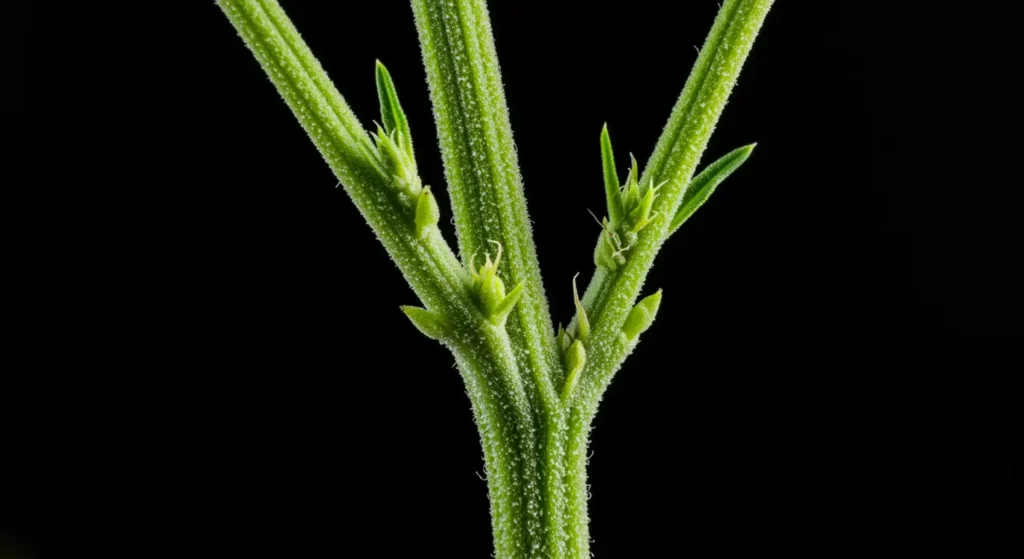
Branches
Branches extend outward from nodes along the stem. They hold the fan leaves that power photosynthesis and the buds that form later in flowering. Training techniques like bending or topping branches help shape the plant and maximize the number of colas without increasing height.

Nodes and Internodes
Nodes are the points where branches or leaves grow from the stem. The spacing between nodes, called internodal length, indicates whether the plant will be tall and stretchy or short and compact. Early identification of node spacing helps growers predict the plant’s final shape.
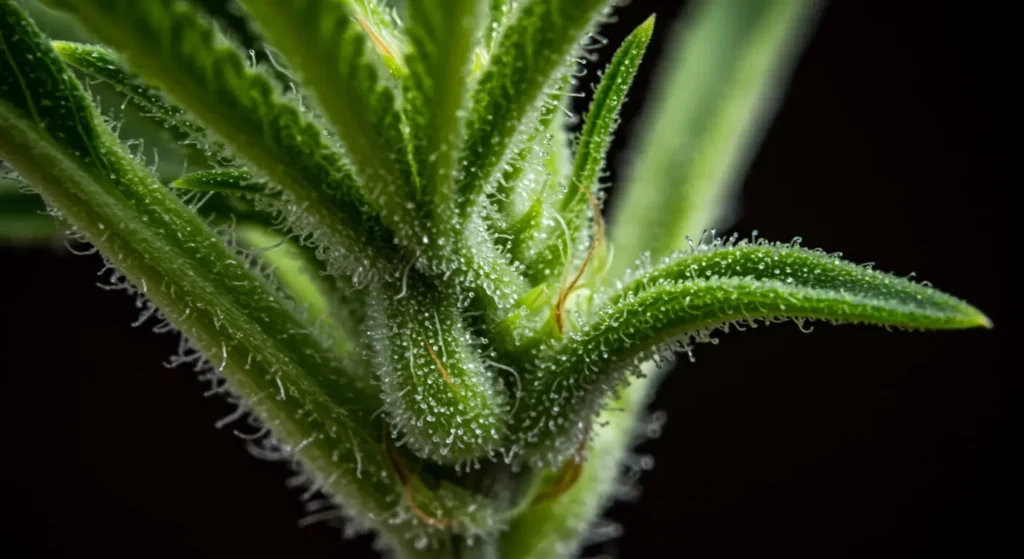
Fan Leaves
Fan leaves are the large, iconic leaves that capture light for photosynthesis. Their wide surface area allows the plant to absorb energy efficiently. Fan leaves usually contain little resin and are removed during trimming, but they are vital for healthy growth during vegetative development.
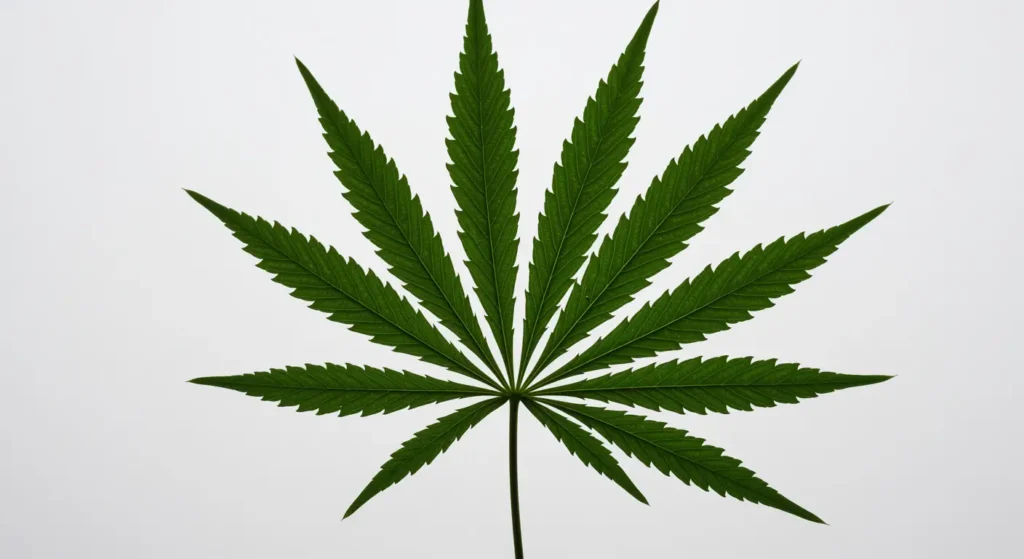
Sugar Leaves
Sugar leaves are small, trichome-covered leaves growing within the buds. Their resin content makes them valuable for extracts, edibles, or pre-roll trim. Although not smoked directly like buds, they are an important source of cannabinoids and contribute to the plant’s total resin production.
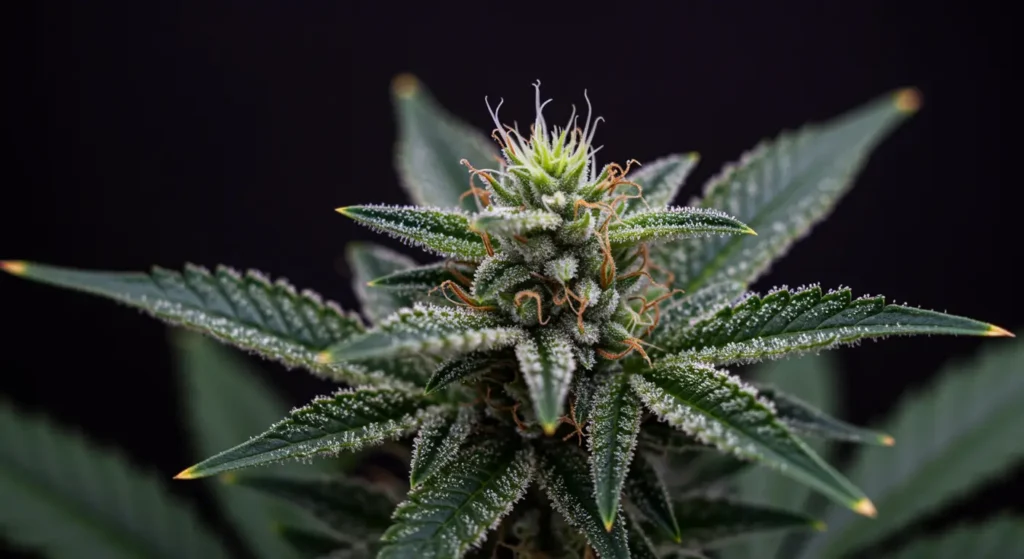
Flowers (Buds)
Flowers, or buds, form only on female plants and contain the cannabinoids responsible for cannabis’s effects. During flowering, buds grow denser and produce aromatic terpenes. Once harvested, they are dried and cured to preserve potency, flavor, and overall quality for consumption.
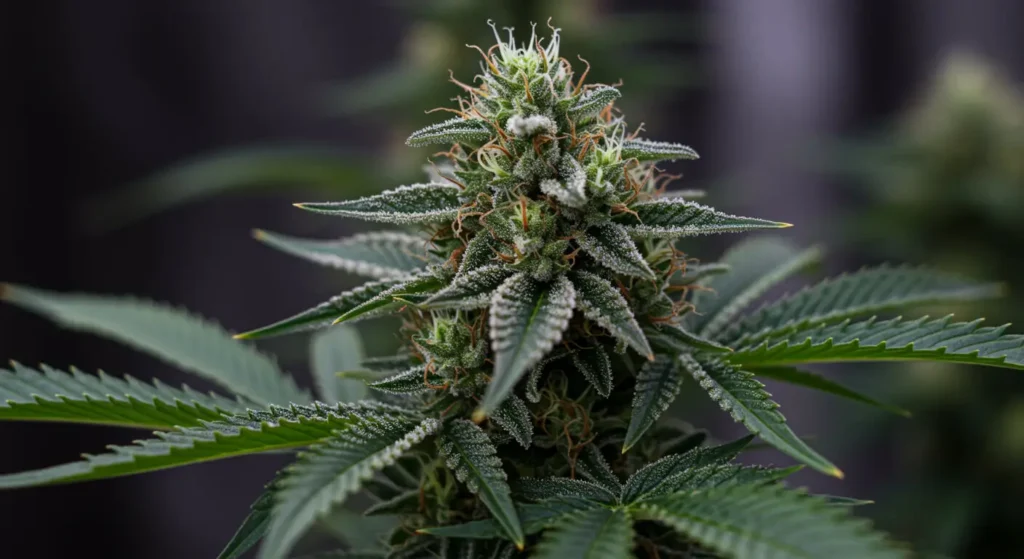
Colas
Colas are clusters of buds that form tightly together on a branch. The main cola grows at the top of the plant and typically becomes the largest and most resinous. Lower branches develop smaller colas that contribute to overall yield but receive less light.
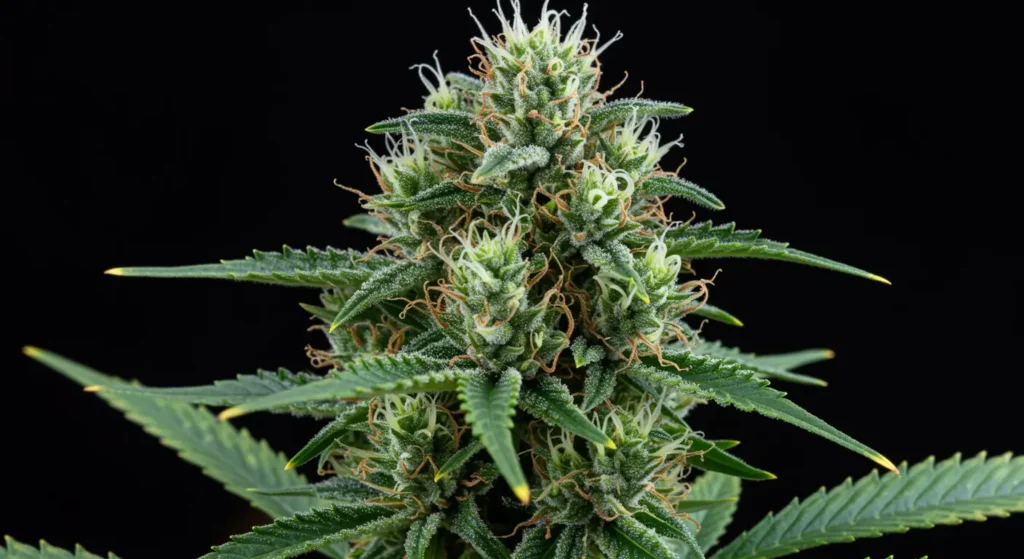
Bracts and Calyx
Bracts protect the reproductive organs inside the female flower and are coated in resin glands. Hidden within them is the calyx, a thin, translucent layer covering the ovule. Although small, these structures contain some of the highest cannabinoid concentrations found on the plant.
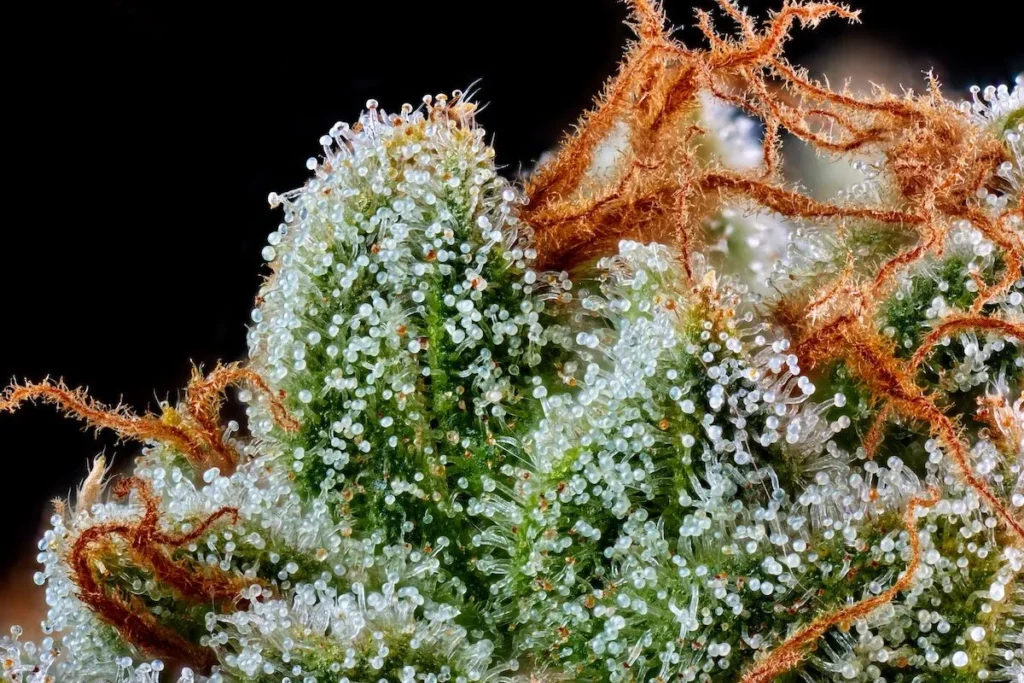

Stigmas and Pistils
Pistils are the flower’s reproductive structures, and stigmas are the hair-like strands extending outward to catch pollen. These stigmas change color as the plant matures, shifting from white to yellow, orange, or brown. While important for reproduction, they contribute little to overall potency.
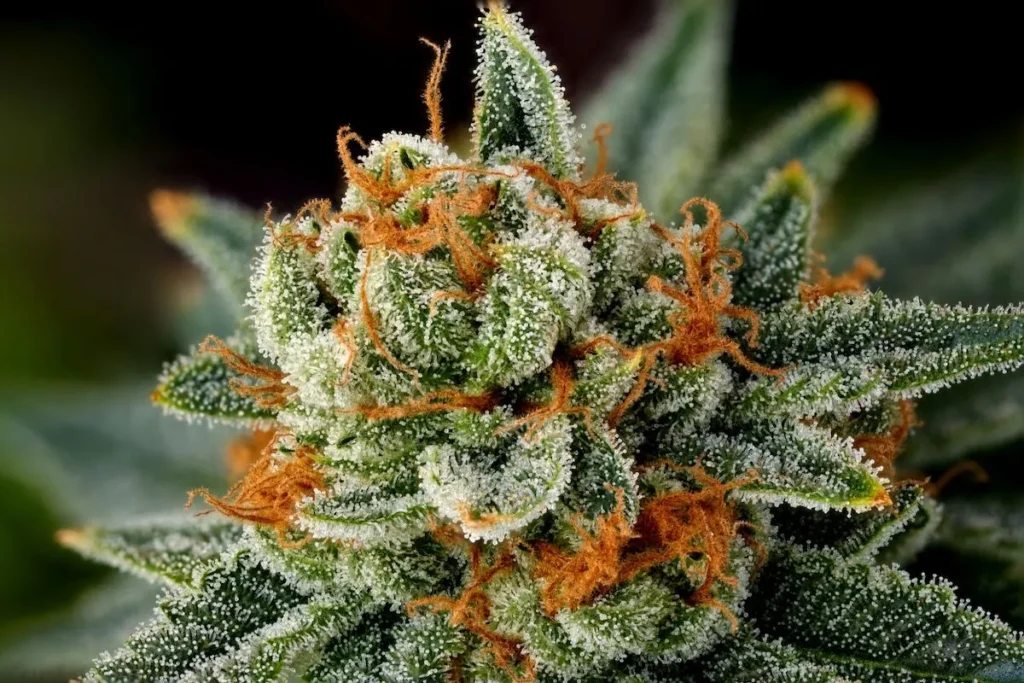
Trichomes
Trichomes look like tiny crystal droplets and produce cannabinoids and terpenes. They form a frosty coating on buds and sugar leaves. Their resin content influences potency, flavor, and aroma, making trichome development a key indicator of plant maturity and harvest timing.

Male, Female, and Hermaphrodite Plants
Female Plants
Female plants produce cannabinoid-rich buds and are the primary focus for growers. They create resin-secreting flowers with pistils and trichomes. When grown away from males, they remain seedless—known as sinsemilla—and focus all their energy on producing dense, aromatic buds ideal for consumption.
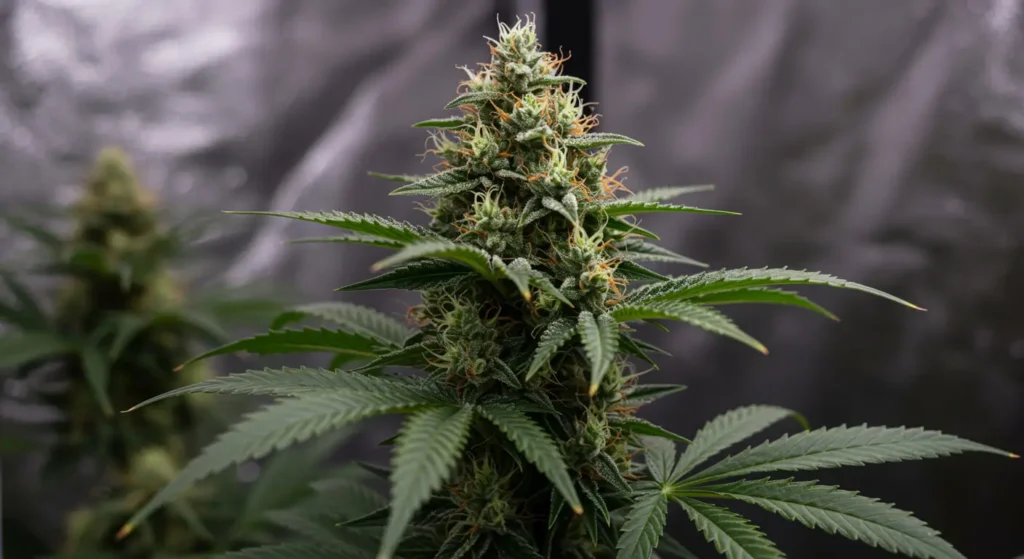
Male Plants
Male plants develop round pollen sacs at their nodes. While not useful for bud production, they are essential for breeding because they contribute half of a strain’s genetics. However, when grown near females, they can pollinate them and cause unwanted seed formation.
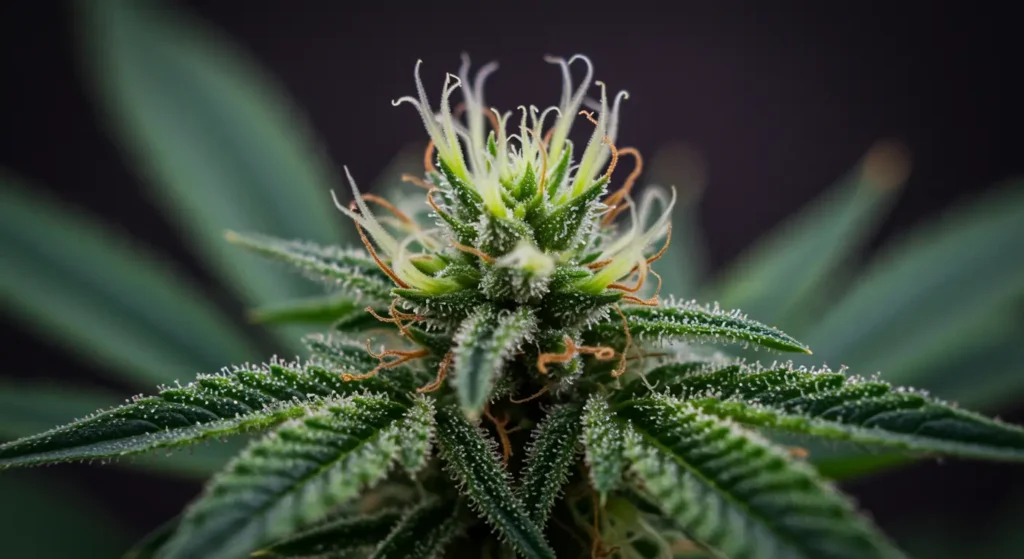
Hermaphrodite Plants
Hermaphrodites contain both male and female traits and can self-pollinate. This often happens when a plant is stressed by factors such as light leaks, temperature swings, or physical damage. Because they can seed an entire crop, growers remove them quickly to prevent accidental pollination.
